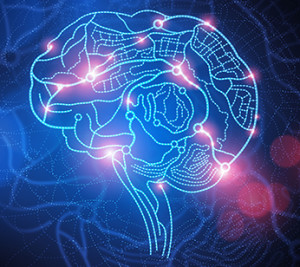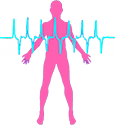
Biofeedback
The general psychophysiological principles most easily understood by most clients and most relevant to the majority of disorders seen by the biofeedback practitioner are based on stress theory (Selye, 1956, 1974). Most people today are somewhat familiar with the “fight-flight” response. Relating this to the concept that there are two branches to the autonomic nervous system which should balance each other is a concept most people can understand. The sympathetic nervous system can be characterized very simplistically as the one that speeds things up in the body, the system that is primarily involved with anger, fear, and excitement and tends to act through mass discharge. The parasympathetic nervous system may be characterized as the one that slows things down, and restores the body. It is the system activated with the “relaxation response” (Benson, 1975).

The aim of biofeedback training for most people is to reduce the activity of the sympathetic nervous system by learning relaxation. For those who respond to stress with a parasympathetic response, the explanation must be couched in these terms, again, with the aim of training being the balancing of the two systems. In this case, the client needs to activate the sympathetic nervous system when stressed, and learn to differentiate the us of the parasympathetic nervous system as a stress response and as a part of the relaxation response.
The purpose of biofeedback therapy is to gain voluntary control of the body. As opposed to treatment by drugs, surgery, chiropractic, massage, psychotherapy and other forms of interventions, clinical biofeedback trains the client to control maladaptive body processes. Control is achieved through learning-awareness process. Body response patterns are learned. They have become habits, conditioned responses. For example, our muscles soon learn to respond automatically as we learn to swim or type. They may also learn to respond automatically to stress by contracting, for example, in the area of the neck and shoulders. Just as we can change habitual typing errors, or learn to swim more efficiently, so can we eliminate maladaptive psychophsyiological patterns and learn more adaptive patterns. We can learn the skills needed to control any body function of which we are aware. Clinical biofeedback also involves learning relaxation techniques, using the instruments to the practitioner and client toward processes that are most effective for the client. Instrument readings are further used to reinforce physical and mental/emotional behavior that are related to relaxation and automatic nervous system balance. Reinforcement is an important aspect of learning.
The client is an active participant in the process of healing and health maintenance. The client and practitioner are partners in setting and meeting treatment goals. The client is responsible for between-session practice of relaxation or other homework techniques and for maintaining awareness of symptom patterns as the relate to life-style factors. The client is expected to gain awareness of stressors in order to prevents symptoms from occurring by practicing relaxation or coping techniques when stressors are expected or present.
If you have ever taken your temperature or stepped on a scale to see how much you weigh, you have used biofeedback. The temperature and weight readings from these devices give “feedback” about your body to tell you whether you have a fever or have gained weight. This information will help you make decisions about what to do next. In a similar way, biofeedback therapists use specialized equipment to train patients how to improve their health by using signals from their own bodies. Biofeedback is a non-invasive form of treatment. The therapist attaches sensors or electrodes to the body and these sensors provide a variety of readings–feedback–which is displayed on the equipment for the patient to see. The signals typically measure skin temperature, muscle tension and/or brainwave function. With this information, patients can learn to make changes so subtle that at first they cannot be consciously perceived. With practice, however, the new responses and behaviors can help to bring relief and improvement to a variety of disorders.
Through biofeedback a person experiencing migraines can learn to ward off headaches. A person who experienced a stroke may regain muscle use. Children and adults diagnosed with ADD or ADHD may see improved concentration and control. People with urinary or fecal incontinence or other pelvic floor disorders can achieve improved bladder control. Individuals with stress-related disorders learn to relax and improve their overall health.
